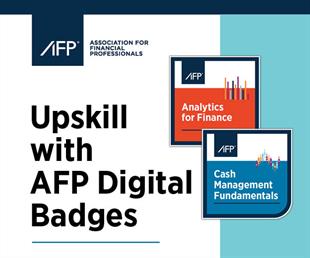Articles
What Is Driving, and Enabling, Digitization in Treasury?
- By AFP Staff
- Published: 7/11/2022

It is clear that automation and digitization permitted companies to continue to operate in a remote working environment in a way that simply would not have been possible just a few years ago. It is also possible to say that many of the techniques and processes implemented during global lockdowns would have been adopted anyway; the requirement to work remotely simply accelerated changes that were already in transit. If that is case, the big question is: What happens next?
To try to answer this question, it is helpful to determine what is driving and enabling automation and digitization in corporate treasury departments around the world.
Drivers of digitization
The drivers are relatively straightforward to identify. Treasury still wants to:
- Improve its visibility and control of cash, and to become more operationally efficient.
- Use the time saved through standardization and automation to add value to the business as a whole. Management relied on treasury’s insights into cash to get through the height of the coronavirus pandemic; treasury has the opportunity to extend its role as strategic business partner even further now.
Many treasury departments have been, or are going through, a process of centralization. Centralization might just be at the policy level, via the adoption of standardized processes, although many companies have sought to centralize processing too.
Enablers of digitization
On the face of it, the enablers are twofold: technological development and regulatory change. Both continue to play an important role in determining what is possible. Technology means that data and systems can be based “in the cloud.” Data can be collated and analyzed via a combination of APIs and artificial intelligence, giving treasury much greater visibility over cash and risk. Regulation gives companies much more flexibility over how they manage liquidity and payments, and requires financial institutions to open their data to third parties critical to the use of APIs.
Yet, these two enablers tell only part of the story. Just as important is a company’s appetite for automation and, to achieve the most significant benefits, the appetites of its partners along its supply chain. Much of this appetite is driven by the maturity of the company itself. Companies with established treasury departments may already have invested significantly in technology, so incremental change, such as deeper use of a particular module, may be easier to achieve. Newer treasury departments, whether in start-up companies or in new areas, will find it easier to adopt new technology, leapfrogging the legacy systems of the more established departments.
This article is a complimentary piece to the 2022 AFP Executive Guide: A Treasurer’s Guide to Centralization, underwritten by Standard Chartered. Read the full guide here.
The attitude of partners is becoming more important too. Internal changes can result in some efficiency gains, but real improvements come when partners cooperate. Expectations on how business should be done are influenced by the use of technology in our personal lives. As an example, the widespread consumer use of QR codes and real-time payments in countries such as Singapore also influences expectations in the business environment. If a company’s customers expect to pay via an automated process, it is much easier to implement an automated solution.
Digitization: What next?
The question for treasurers is how best to take advantage of the opportunities to automate and digitize. It is not a simple answer, primarily because innovations continue apace. Investment in fintech companies and regulatory encouragement of the shift to real-time payments and data exchange mean that new opportunities will continue to emerge. It is perhaps by keeping in mind treasury’s core purpose — to support the business in achieving its strategic objectives — that treasurers will be able to make the best decisions about how to operate their own departments.
Copyright © 2024 Association for Financial Professionals, Inc.
All rights reserved.

